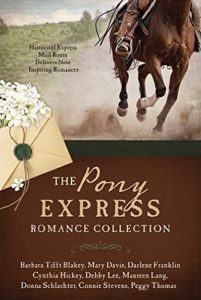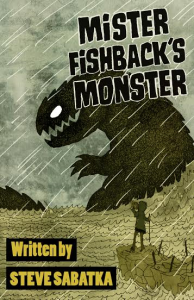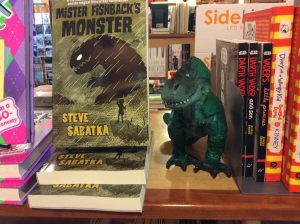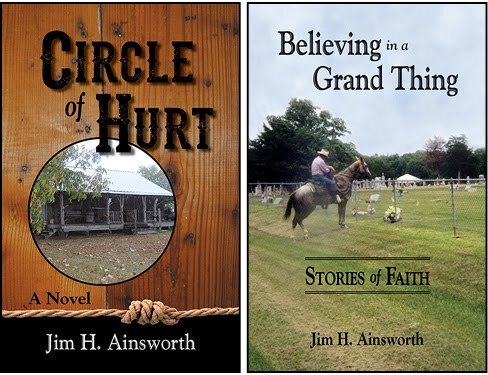James R. Callan's Blog, page 11
June 9, 2017
An Inrewrview with Eula Moore
Today I’m interviewing Eula Moore, the grandmother of Crystal Moore,  heroine of A Ton of Gold and A Silver Medallion. Hello, Eula. How are you today?
heroine of A Ton of Gold and A Silver Medallion. Hello, Eula. How are you today?
EULA: I’m upright, and I’m talking, so I guess I’m doing pretty good.
JIM: Tell me about The Park, since it seems to play a big part in Crystal’s adventures.
EULA: The Park, that’s where I live, is where Crystal grew up. Her parents were both killed in a freak auto accident when Crystal was a little tyke. So she came to live with us at The Park. It’s 320- acres in the piney woods of east Texas. Dan and I bought it when we was first married. That was might near sixty years ago. Couldn’t afford it. But you know kids. We got it and made it work. It’s a beautiful places with a great lake, good fishing, nice hills, and lots a trees. Very peaceful. We named it The Park right after we move on it. Anyways, Crystal roamed around The Park from the time she was seven until she went off to college at S.M.U. and then Stanford. Course, now she lives in Dallas. Too much traffic and noise there for me.
JIM: You mentioned Dan. That’s Crystal’s granddad?
EULA: Was. He went to meet his maker a dozen years ago. My first and only true love. And a great Dad and Granddad for Crystal.
JIM: That must have been about the time Crystal left for S.M.U..
EULA: Right. S.M.U. and then rode off to Californi. Entered some kind a Ph.D. program or other.
JIM: Did she earn her doctorate?
EULA: Nope. Something happened just before she was to finish. Don’t know what, and she never would say. Didn’t want to talk about it. Never did. But, she thought she was just a few months from ending and she ups and leaves and comes home. Moped around The Park for months. Finally got a job at that info retrieval company where she works now. That has perked her up. She getting back to her old self.
 JIM: This past year, she went down to Mexico to rescue some young girls. What did you think about that? I mean, she doesn’t seem like the adventure-seeking type to me.
JIM: This past year, she went down to Mexico to rescue some young girls. What did you think about that? I mean, she doesn’t seem like the adventure-seeking type to me.
EULA: She ain’t. And I thought it was a dumb thing to do. Could a got herself killed. But she’s got a soft spot for things that can’t help themselves. So, off she went.
JIM: Didn’t you try to stop her?
EULA: She a grown woman. And she’s got a strong head and, except for that fool thing, a good head on her shoulders. I told her it was a dumb idea. But she thought those kids would never be free unless she did something.
JIM: And she did rescue the girls and reunite them with their mother.
EULA: Yes sir. She did. Course then she had two crooks trying to kill here. Good thing she had her old Nana to help her take care of them skunks.
JIM: I’d love to hear the details of how you two captured two assassins.
EULA: And I’d love to tell you. But not today. I got a game of Mexican Train waiting for me. Don’t want to keep my friends waiting. You come on back another day and I’ll tell you how I captured those two bums. Well, actually it was Crystal and me. But right now, I gotta go. Bye.
JIM: And folks, she just took off. I never had an interview end so abruptly. We’ll get back with her on another day. Knowing what I’m finding out about Eula, I’m sure it will be an interesting story. That’s all for today.
June 2, 2017
The 10-day Writing Challenge
Today, Leeann Betts issues a challenge. She writes contemporary suspense, while her real-life persona, Donna Schlachter, pens historical suspense. She has released five titles in her cozy mystery series, By the Numbers. In addition, Leeann has written a devotional for accountants, bookkeepers, and financial folk. Donna Schlachter, has also published a book on writing, Nuggets of Writing Gold. Today, she issues a challenge for writers.
suspense, while her real-life persona, Donna Schlachter, pens historical suspense. She has released five titles in her cozy mystery series, By the Numbers. In addition, Leeann has written a devotional for accountants, bookkeepers, and financial folk. Donna Schlachter, has also published a book on writing, Nuggets of Writing Gold. Today, she issues a challenge for writers.
Have you ever stared at a blank computer screen and wondered what on earth you were thinking when you thought you were a writer? Or maybe you’ve pounded away at the keyboard and cranked out a thousand words, but when you read them, realized they were gibberish and needed to be deleted? Or perhaps you’ve written a complete novel, or two, or three, but can’t seem to find the energy to edit them, or send them to an agent or publisher.
Writing is hard. It’s hard to be rejected. Criticized. Told you have plot holes. Or cardboard characters. Or you need to join a writers group and learn how to write. Or your story line is boring.
I know how you feel. Really, I do. I’ve been told all of that, and more. “Horrendous” was once used to describe a project I submitted to an editor.
So how do we overcome all of the voices–including our own–telling us we can’t do this? How do we get enough oomph in our engine to continue writing until we reach the end of the book? How do we persevere long enough to see success, however we define that for our writing?
A 10-day writing challenge might be the perfect solution to all of these problems. It’s short enough not to eat up too much time. Each day’s activity takes twenty minutes or less. And by the time you complete Day 10, you’ll have character sketches and an outline for a book.
 Here we go, the abbreviated version:
Here we go, the abbreviated version:
Day 1: Set a timer for 3 minutes. Write down why you’re taking this challenge. Go ahead, be silly. Be insightful. Be honest.
Day 2: Set a timer for 3 minutes. Write down things you’re passionate about. Passion as in you could talk for hours without notes. Passion as in it gets your blood boiling when you hear someone else say it’s not important.
Day 3: Set a timer for 3 minutes. Write down things you’re good at. Not expert. Just something you do adequately.
Day 4: Set a timer for 3 minutes. Write down the titles of books you want to write. If you can’t think of any, write down the titles of books you wish you’d written.
Day 5: Set a timer for 3 minutes. Choose one title from Day 4. List the characters and the setting.
Day 6: Set a timer for 3 minutes. Write your acceptance speech for an Academy Award for when the novel from Day 5 is turned into a movie.
Day 7: Set a timer for 3 minutes. Write the opening paragraph for the book from Day 6.
Day 8: Set a timer for 3 minutes. Write a two-sentence summary of the book from Day 7. What you’d say in response to the question, “So, what’s your book about?”
Day 9: Set a timer for 3 minutes. Write a one-sentence summary of each chapter of the book you worked on in Days 5 through 8.
Day 10: Set a timer for 3 minutes. Write the final scene for the book you’ve been working on in Days 5 through 9.
That’s it. From idea to outline in ten days. Now, write that book!.
Donna publishes a free quarterly newsletter that includes a book review and articles on writing and books of interest to readers and writers. You can subscribe at www.LeeannBetts.com or follow Leeann at www.AllBettsAreOff.wordpress.com All books are available on Amazon.com in digital and print.
Facebook: http://bit.ly/1pQSOqV
Twitter: http://bit.ly/1qmqvB6
Books: http://amzn.to/2dHfgCE
May 26, 2017
Why do I need a critique partner?
The answer is basically the same as one would give to, “Why do I need an editor?”
The answer is simple. We cannot see our own mistakes.
There are three reasons for this. One, we may not know we’re making a mistake. Unless we are very experienced in writing in the specific area of our current work, there are things we may not know or understand. For instance, if I write a mystery, there will be certain police or medical procedures I don’t know about. Some I will research. Others I don’t understand that I need to.
There may be basic accepted practices of writing I don’t know. As an example, I might not know how to handle internalization. Do I use quotes, italics, first or third person, present or past tense, attribution?
The worse aspect of this is you may not know you don’t know. You do what you think is correct. Checking on what is accepted never enters your mind.
The second reason we can’t see our own mistakes is that our mind knows what we intend, and if our fingers don’t accomplish this, our mind will. I can write a sentence and leave out an important word. But when I read that sentence, my mind will automatically supply the missing word. I am not even aware that a word is missing.
 The third reason, and often the most important one, is that another set of eyes, another reader, may be able to point out things that don’t work, or don’t work well. Perhaps it is something that you, the author, know very well. But somehow, it is not transmitted to the reader. Or you may be trying to get a certain feeling across. The critique partner may tell you that you did not. A good critique partner might say you are too verbose. Or your dialogue is stilted. Or perhaps you spend too much time on description – or not enough. Another person may say the protagonist is not well drawn, or the motivation doesn’t come across. Maybe the pace is off.
The third reason, and often the most important one, is that another set of eyes, another reader, may be able to point out things that don’t work, or don’t work well. Perhaps it is something that you, the author, know very well. But somehow, it is not transmitted to the reader. Or you may be trying to get a certain feeling across. The critique partner may tell you that you did not. A good critique partner might say you are too verbose. Or your dialogue is stilted. Or perhaps you spend too much time on description – or not enough. Another person may say the protagonist is not well drawn, or the motivation doesn’t come across. Maybe the pace is off.
Another person can see so much that the author cannot. This is a valuable resource you should not fail to use.
A good critique partner can help on all of those. Ideally, she’ll know the area in which you are weak. If not, perhaps she may question your choice and cause you to do more checking. And when she reads the sentence in which you left out a word, her mind will not supply it. She will immediately see that you have left out a word.
The same thing is true of certain spelling errors. A spellchecker won’t catch many spelling problems. If you put down “your” when you need “you’re,” the spellchecker won’t catch it but your critique partner will. You type “there” when you mean “their”—no help from spellchecker. But the dependable critique partner will circle it in red.
There are two points I must make before I close. First, you need a good critique partner. You are not looking for someone to pat you on the back and say, “That’s the best thing I’ve ever read.” You need one who is knowledgeable in writing, particularly in your area. You need one who will catch the mistakes and tell you what they think you need to do to improve the writing.
The second point is, you must be willing to listen objectively. I’m not saying you must follow all suggestions. You must consider all suggestions and then implement those that make sense to you, that fit your style. Remember, the partner is not criticizing you, rather trying to help you improve your writing.
Select a critique partner carefully. Work closely with her. And both of you can become better writers.
May 5, 2017
A Greased Pig?
Many years ago, I was teaching in a private school. One year I was sponsor of what many of the faculty labeled as the most difficult of the senior classes. Actually, I found them to be a very energetic and imaginative group, perhaps less concerned with the rules than most, and certainly less studious. But they were interesting, fun and goodhearted. I never had a problem with any of this class.
I never had a problem with any of this class.
So it was no great surprise when they proposed holding a greased pig chase as a fund raiser. I raised a number of objections, but they countered each with a reasonable answer. After seeking approval from administration, a date was set.
One boy in the class had an uncle who raised pigs, so that was taken care of. Posters were made. In fact, those in charge of publicity were very innovative . One day they were more animated than usual. The greased pig chase was being publicized on the local radio station most popular with high school kids. However, only students from our school could participate in the chase.
Entries began immediately ,with an amazing number coming from the freshman class. Briefly, I wondered if there was any coercion, but dismissed that thought. In fact, the whole school was buzzing about the upcoming porker party.
The day before the event, I received a call from an animal rights group. They were concerned about the safety of the pig. I thought to dismiss that thought also. The pig was soon to be shipped off to the packing house which would be a much worse experience than being chased by screaming teenagers. But the animal advocate was very serious. I explained that the pig would not be harmed. Once caught and secured by one or more students, he would be quickly returned to his home on the range. The contestants were allowed no tools, no aids at all. They must catch the pig using only their hands, and maybe their feet. Instantly, the pig’s protector worried that someone might kick the pig. I assured her no kicking was allowed.
What were we going to put on the pig? Well, it was a “greased” pig contest. I guaranteed her it would be only natural products, quite possibly coming from the pig’s ancestors.
 “This might be too tiring for the pig,” she continued. “I must insist you allow a rest period every five minutes.” I suggested every fifteen minutes and we ultimately compromised on ten minutes. I wondered how effective this would be. Would the pig understand a rest period?
“This might be too tiring for the pig,” she continued. “I must insist you allow a rest period every five minutes.” I suggested every fifteen minutes and we ultimately compromised on ten minutes. I wondered how effective this would be. Would the pig understand a rest period?
The day finally arrived and Joe drove his truck in with a very sturdy cage in the back containing… The Pig. To many, it looked like a wild boar. It snorted and banged against the cage, and several of the small freshmen began to have doubts about chasing this wild animal. Some worried the razorback might chase them instead.
The class committee decided to use vegetable oil to grease the swine, assuring the pig would be very hard to hold. Ten minutes before start time, students lined up behind a rope marking the starting line, and Joe and two classmates poured corn oil on the shoat, who didn’t care for the attention. Hands would pop in and spread the oil and jerk back before the pig could bite.
 Though close to eighty students had signed up, there were probably only fifty on the starting line. Possibly some had second thoughts after seeing this ferocious looking bovine. But there were probably another two hundred and fifty spectators. On the count of three, the rope was dropped and the door to the cage thrown opened.
Though close to eighty students had signed up, there were probably only fifty on the starting line. Possibly some had second thoughts after seeing this ferocious looking bovine. But there were probably another two hundred and fifty spectators. On the count of three, the rope was dropped and the door to the cage thrown opened.
Porky just stood there.
After railing against the cage, it didn’t want to leave. Joe grabbed a pencil out of his shirt pocket, reached in the cage, and jabbed the pig in its hindquarters. The bore took off. And as the contestants started running and screaming, the pig kept running.
Two or three students got a hand on the porker, but the slippery oil let the swine escape. Several dove at the pig and got nothing but a handful of grass. However, twin brothers had devised a plan and simultaneously dove at the pig from opposite sides. As the greasy bovine slipped out of one twin’s hands, it put him in the brother’s arms.
In three minutes, the contest was over. The twins held the oil covered pig down for the required thirty seconds and were declared the winners.
This special class had once again deviated from the norm. During the week leading up to the event anticipation saturated the school and grabbed the attention of the entire student body and most of the faculty.
And though the contest was very short, everyone in attendance seemed to have a great time.
Except, perhaps, the pig.
James R. Callan
Callan is no longer teaching. He writes mystery and suspense novels. Thus far, none has featured a wild pig, with or without grease. But he’s not ruling that out.
April 28, 2017
Writing Your Family Story
Today’s guest blogger is Donna Schlachter. She lives in Denver  with husband Patrick, her first-line editor and biggest fan. She writes historical suspense under her own name, and contemporary suspense under her alter ego of Leeann Betts. She is a hybrid publisher who has published a number of books under her pen name and under her own name. Donna is also a ghostwriter and editor of fiction and non-fiction, and judges in a number of writing contests.
with husband Patrick, her first-line editor and biggest fan. She writes historical suspense under her own name, and contemporary suspense under her alter ego of Leeann Betts. She is a hybrid publisher who has published a number of books under her pen name and under her own name. Donna is also a ghostwriter and editor of fiction and non-fiction, and judges in a number of writing contests.
A couple of years ago, I had the unhappy fortune to be with my father as he answered questions for the intake counselor at a hospice facility. He patiently answered her questions about his family, his children, what he’d done for a living, until he grew tired. And then he simply said, “If you want to know any more, read the book.”
“Read the book?” She looked at each sibling. “What book?”
“There on the bookcase.”
I handed her the book. “It’s the first part of his life, up until he married my mom, and then the last part, where he found his half-siblings from his father’s side of the family.”
She thumbed through the book then she looked up at us again. “You won’t believe how many family members come through here every year who say they wished they’d listened more closely to their parent’s stories. Or how many parents who say they wished they’d taken time to write down the stories. This is the first time I’ve met anybody who actually did it. You have a treasure here.”
Even if you don’t think of yourself as a writer, you might want to record family stories for future generations. Here is the process we used to write the book for family only and then prepare it for the general market.
Decide what your goal is: first and foremost, this was a history book for the family. Secondly, he knew his story wasn’t unique, but the setting and the characters were, and we felt that would set the book apart in the general market.
Decide the structure: he wanted to tell three separate stories including how he came to be born and placed in the family he was raised in, his life growing up in a unique setting, and finding his half-siblings on his birth father’s side of the family. So we went with the three-books-in-one approach, from two different points of view, his birth mother’s and his.
Decide what to include: a person’s life has innumerable stories, so we kept to the ones that best described my father—pragmatic, logical, forward-thinking.
Decide whom to protect: in the family-only version, we toned down some stories where we felt we knew the truth but couldn’t prove it, while in the market version, we changed the names of the characters, kept the name of the town, and wrote it the way we believed it happened.
Decide what to exclude: my father came to Christ three weeks before he passed away, so that was a huge part of the family-only book, even though it was a short part of his life on this earth. The title, My Cup Has Overflowed, came from a song I love called “I’m drinking from my saucer, Lord, because my cup has overflowed”. We decided not to include much of that story in the market version.
So, if you’re thinking about writing your family story, don’t wait. If you’re tired of hearing Uncle John’s stories or Grandma Mary’s tales, don’t tune them out. Write the stories. They won’t always be here.
Donna will be teaching an online course for American Christian Fiction Writers in June 2017, “Don’t let your subplots sink your story”. Her current release, Echoes of the Heart, a 9-in-1 novella collection titled “Pony Express Romance Collection” released April 1.
Fiction Writers in June 2017, “Don’t let your subplots sink your story”. Her current release, Echoes of the Heart, a 9-in-1 novella collection titled “Pony Express Romance Collection” released April 1.
Facebook: www.Facebook.com/DonnaschlachterAuthor
Twitter: www.Twitter.com/DonnaSchlachter
Books: http://amzn.to/2ci5Xqq
Echoes of the Heart: http://amzn.to/2lBaqcW
April 21, 2017
Complaining
We were complaining some time back that both of us needed to go see the eye doctor. My wife needed to have her glasses changed for a new prescription and I needed to get glasses.
Then we met Rudolfo.
Rudolfo is blind. But he has a beautiful voice. He walks along the Malecôn, a mile-long wide walk along the beach in Puerto Vallarta. He has a small device strapped to his chest. It amplifies music from a recorder the size of a cell phone. Maybe it is a cell phone, for all I know. And Rodolfo sings. He walks along singing, and people will drop a few pesos into a small container also strapped to his chest.
Many days, he is also followed by a woman, who rests a hand lightly on his shoulder. She is his wife, and she is also blind.
He has a microphone, but the amplifier is set low so that is not obtrusive. In fact, ten feet away you wouldn’t hear him at all. But as he passes, you get this pleasant voice, singing quietly, offering what he can give. He does not ask for donations, but it is obvious this is his living.
We have had an opportunity to visit with him on a few occasions, when he was not singing and trying to earn a living. He is a humble man, always pleasant, never complaining, at peace with his place in life. We discovered his small device contains the music for three hundred songs. He can press a button and it scans through the songs so fast that I could hear only a blur of sounds. To me, it seemed there was one word, or maybe three notes, per song, and they were zipping by at five to ten songs per second. But to Rudolfo, they were clear. If I asked for a particular song, he would scan through the list and in seconds, he would have the music I requested. Clearly, his hearing is highly developed.
So, Rudolfo not only provides us with beautiful songs, but also reminds us that we have so much. I grumble about getting glasses. Rudolfo would love to have glasses, IF they would help. But they would not in the least. He and his wife both have been blind since birth. They do not grumble. They would like a few more pesos. But they are at peace with their lot. Rudolfo sings beautifully.
And he has helped me.
James R. Callan, 2017
April 14, 2017
Our Guia in Chile
I’ve talked about unexpected kindnesses, and I’m going to do that again today. And interestingly enough, this one also took place during our visit to Chile.
One of the things we’ve found in traveling abroad is that foreign countries  don’t have the abundance of coin operated, self serve laundromats. And often, to have the laundry done at a commercial shop may take longer than we will be in that town. We tend to stay away from home for long periods, but to stay in one town only a short period. Ah, the little problems. We need to plan ahead and decide that since we are planning on being in this town for five days, we can send the laundry out.
don’t have the abundance of coin operated, self serve laundromats. And often, to have the laundry done at a commercial shop may take longer than we will be in that town. We tend to stay away from home for long periods, but to stay in one town only a short period. Ah, the little problems. We need to plan ahead and decide that since we are planning on being in this town for five days, we can send the laundry out.
We had been in Chile for a couple of weeks and felt the  need to do some laundry. And after checking around, we found a laundry (not self-serve) that would do the laundry for you and return it the next day. Great. My wife, Earlene, explained in her best Spanish, no planchada. No ironing. She tried again. No planchas. You don’t iron.
need to do some laundry. And after checking around, we found a laundry (not self-serve) that would do the laundry for you and return it the next day. Great. My wife, Earlene, explained in her best Spanish, no planchada. No ironing. She tried again. No planchas. You don’t iron.
A woman had just walked into the store and she said to my wife, “You do not want your clothes ironed?”
My wife was only slight annoyed. She felt like her Spanish was good enough to get the idea across. But the woman was smiling and Earlene said, “Yes. I do not need any of this ironed.”
The woman spoke in Spanish to the employee behind the counter, then turned back to us. “My name is Maria and this is my business. I just wanted to make sure you got what you wanted.”
We talked for a few minutes, telling Maria where we were from, and answering a few of her questions. After a short while, Maria said, “Maybe I’ll be your guia tomorrow.”
We were surprised and I blurted out, “What does a guia cost for a day?”
“Nothing. It will be fun. I’ll show you around.”
A few minutes later, arrangements had been made as to where we would meet and what time. Then, she escorted us down a block to a restaurant she could recommend and spoke to the owner, asking him to take very good care of us.
The next morning, we met Maria, our guia, our guide. She showed us a number of places we would never have seen without her. She gave us a wealth of interesting facts about Chile and the area we were in. She took us to a lake where we boarded a boat which actually took us into Argentina. Of course, we bought her meals and boat ticket, etc. But she refused any other money. She took us to a great store where Earlene bought a jacket and shoes she still loves today.
It was a delightful day, made so much better by a unexpected kindness from a stranger. She seemed to enjoy guiding us around and giving us interesting information. For us, it was one of the highlights of our trip. What wonderful people strangers can be.
Leave a comment about your experiences with unexpected kindness from strangers.
James R. Callan, 2017
April 7, 2017
Fiction Needs Facts!
Today’s guest is a retired newspaper editor, J. R. Lindermuth. He lives and writes in a house built by a man who rode with Buffalo Bill Cody. He has published  16 novels, including six in his Sticks Hetrick crime series, plus a non-fiction regional history. His short stories and articles have been published in a variety of magazines. He is a member of International Thriller Writers and is a past vice president of the Short Mystery Fiction Society. He currently serves as librarian of his county historical society, where he assists patrons with genealogy and research
16 novels, including six in his Sticks Hetrick crime series, plus a non-fiction regional history. His short stories and articles have been published in a variety of magazines. He is a member of International Thriller Writers and is a past vice president of the Short Mystery Fiction Society. He currently serves as librarian of his county historical society, where he assists patrons with genealogy and research
If you write fiction, you have to pay attention to facts.
That may sound like a contradiction, but it isn’t meant to. Fiction offers a simulation of reality and if you wrongly portray something your reader knows as ‘fact’ you may be called out on it.
Suppose you’re writing a story set in Arizona in the 1870s (as I did with Geronimo Must Die). You can rely on imagination and create a world to suit your purpose. That’s called fantasy and, if your reader is informed that’s the intent, it’ll probably be accepted without question.
On the other hand, if you want your reader to believe the story is set in this place and time, it becomes important to express things as they actually were. You can twist things a little to suit your purpose (that’s called fiction), so long as your reader is willing to accept them. For instance, your reader will accept your character riding a horse or mule but may frown if you seat them on a dragon (that would be fantasy).
There are two methods. One is called empathy. The other is research.
Empathy is vicariously experiencing the emotion, thought or action of another person. This is a useful tool for a writer in many circumstances. However it has its limits. Some characteristics are timeless. But you live in the 21st century and attitudes today differ to a certain degree from those of the 19th century. How can you know what’s true today was also true then?
The answer is through research. You don’t have a time machine, but we do have a good substitute to give us some idea of what life was like in those days. Reading biographies, histories and fiction of the period provides some insight. These sources were important to me in accurately depicting the Apache and life on the San Carlos reservation. An even better choice for general historical fiction is newspapers of the period. Newspapers reflect the character of the times in which they’re created–they show us what was important to people, what they did with their time, their morals, their prejudices. Everything you need to create a believable character of the period.
These newspapers are available in collections at historical societies, in many libraries and even on line. Librarians are good at telling us where to find newspapers to suit our needs. Reading them is fun and sure to stimulate your imagination.
Here’s a blurb for Geronimo Must Die:

Geronimo and rascally half-breed Indian scout Mickey Free have never been friends.
Yet, Mickey has already saved Geronimo’s life twice (without acknowledgement) and is the only one who can keep the great Apache leader out of the sniper’s sights now. The sniper has already murdered several tribal leaders and Mickey believes it’s all a plot to prompt a great runaway from the hated San Carlos reservation.
Mickey’s efforts are stymied by Al Sieber, head of scouts, and John Clum, reservation agent, as well as suspicion of other Indians. Adding to his problems, Mickey is in love with a girl whose name he keeps forgetting to ask and who may be allied to the plot.
Only perseverance, risk to his life and, eventually, Geronimo’s help will enable Mickey to resolve this dangerous situation.
Lindermuth’s latest novel, Geronimo Must Die, a classic Western, was released on March 28 by Sundown Press.
March 31, 2017
The King and I
Today, Steve Sabatka, talks about growing up watching the early animated movies when each scene would require twenty-four graphic panels for a single second of a movie. Steve lives in Newport, Oregon and teaches at Newport High School. Steve writes short stories (has won the NETWO short story contest one year) and in 2016, published a young adult novel about teenagers finding a … well, I’d better let Steve tell you.
early animated movies when each scene would require twenty-four graphic panels for a single second of a movie. Steve lives in Newport, Oregon and teaches at Newport High School. Steve writes short stories (has won the NETWO short story contest one year) and in 2016, published a young adult novel about teenagers finding a … well, I’d better let Steve tell you.
I was five years old, watching that classic old flick, King Kong, and losing my little boy mind. Drum-beating natives. Hungry dinosaurs. Wild, throbbing orchestral music. And a giant gorilla with rolling eyes and great, fearsome teeth – fighting biplanes from atop the highest building in the world. It was better than any three
 ring circus or screaming carnival ride. But when Kong, shaggy, bleeding, and defeated, let go and fell one hundred and two stories to the Manhattan pavement, I lost it, son, flipped out, crying and screaming so loudly that my dad thought a police car, old-style siren blaring, had pulled up in our front yard. The King was dead and I was not happy about it. Dad consoled my by explaining that Kong wasn’t dead – because he’d never really been alive. It had all been a trick. A special effect.
ring circus or screaming carnival ride. But when Kong, shaggy, bleeding, and defeated, let go and fell one hundred and two stories to the Manhattan pavement, I lost it, son, flipped out, crying and screaming so loudly that my dad thought a police car, old-style siren blaring, had pulled up in our front yard. The King was dead and I was not happy about it. Dad consoled my by explaining that Kong wasn’t dead – because he’d never really been alive. It had all been a trick. A special effect.In time, I learned that Kong was a puppet, basically, just eighteen inches tall, with metal joints under layers of rubber and trimmed rabbit fur, and that an ex-boxer and newspaper cartoonist named Willis O’Brien brought the mighty ape, to life, one frame of movie film at a time, just like Bugs Bunny or Donald Duck, and that one fleeting second of snarling, chest-beating action required twenty four separate poses, twenty four clicks of the camera shutter. I could imagine Mister O’Brien going off to work every morning – with a briefcase full of toy monsters and dinosaurs – and being paid to play with them all day.
I wanted to be a monster tamer, too. Just like O’Brien and Harryhausen and all the other movie magicians, the names you see at the end of movies like Mighty Joe Young and Jason and the Argonauts and When Dinosaurs Rules the Earth. So I started making my own monsters out of dime store modeling clay – with toothpick points for teeth and eyes that were sucked-down lemon drops – posing them, a millimeter or two at a time, and then snapping off frame after frame of eight millimeter, Kodachrome film.
When the finished film came back from the pharmacy, I would thread up the projector, hit the lights, and then stare, awestruck, as my homemade creatures prowled across the white wall of my bedroom – on their own, as if they had been resurrected from their fossil tombs to growl and shake the earth once more. It was truly magic – and the thing I wanted to do for the rest of my life.
But then, as I got older, something very sad happened – just like in the folk song, “Puff the Magic Dragon.” Clay monsters and dinosaurs made room for other toys. I grew up, went to school, got a job as a school teacher, and pretty much gave up on making monster movies. I also started writing. A lot of short stories. Two bad novels. Strangely, monsters kept cropping up in my stories. Aliens. Dinosaurs, too. I even wrote a very short sequel to King Kong, entitled Fall Guy.
Jurassic Park all but killed the art of stop motion. Made it extinct. And so gone are the days when folks would walk out of a theater after seeing The Seventh Voyage of Sinbad, say, or The Beast From 20,000 Fathoms, asking. “How did they do that?” Everybody knows the three letter answer: CGI. Computer Generated Imagery. Monsters have become nothing more than a file on an ILM desktop.
I miss the old days. And I want younger folks to know about  my heroes and all their frame-by-frame voodoo. So I wrote a young adult novel about a teenage monster nerd (me, basically), and his two oddball buddies – a Vietnamese refugee, and a 250 pound wrestler – trying to explain the scaly, hairy, multi-toothed horror that has just washed up dead on the Oregon Coast.
my heroes and all their frame-by-frame voodoo. So I wrote a young adult novel about a teenage monster nerd (me, basically), and his two oddball buddies – a Vietnamese refugee, and a 250 pound wrestler – trying to explain the scaly, hairy, multi-toothed horror that has just washed up dead on the Oregon Coast.
My book, Mister Fishback’s Monster, was recently unleashed on an unsuspecting world by Black Bed Sheet Books, and, from what I’m told, it was their bestselling young adult title for 2016.
The back cover of my book reads like a B-movie poster:
“Ravenous beasts from the dawn of time! Gun packin’ roller derby queens! Chattering freaks, belched up from the ocean floor! Bug-eyed Martian bullies! Political intrigue! Corporate corruption! Bigfoot! Blood! Guts! Pam Grier!”
Mister Fishback’s Monster is funny. A little creepy. And the special effects are amazing.
I hope you’ll check it out. And I hope to hear from my fellow stop motion maniacs. I’ll send a free copy to the person that can tell me (via Facebook) the name of the unsung hero, the amazingly talented man that actually made Kong (and all the other denizens of Skull Island) out of so much rubber and cotton and metal before handing them, lifeless, over to Willis O’Brien.
Postscript:
I was fortunate enough to meet Fay Wray in person several years before she passed. I told her about freaking out when I was a kid and how I had hoped she and Kong would’ve lived happily ever after. Ms. Wray gave me the kind of expression usually reserved for the hopelessly delusional and said, “Surely, now that you’re older, you understand that the relationship was not very practical.”
Or something like that.
I guess she was right.
But still.
JIM: We love for you to leave a comment. Thanks.
March 23, 2017
How Two Covers Came About
Talented and prolific writer Jim Ainsworth has a book launch of two books at the same time. (I said he was prolific.) It will be from 5 to 8 p.m. March 28 at the A&M-Commerce (Texas) Alumni Center. Because it is unusual to do two books at once, I’ve asked Jim to tell us the story behind the covers of the two books. Very interesting.
Circle of Hurt – We worked diligently to come up with real photos that matched my description of the general store, the table and chairs, the ambiance of the place, but we just could not make it work. I decided a shack might work, with wooden boards as the background.
The real picker shack was clearly in my mind, but it is long gone. My wife, Jan, suggested we drive around and look at cabins, shacks. As we drove by my cousin Marion’s cabin, Jan pulled over.
“What about that one?”
“That cabin is only a few years old. The picker shack would have been maybe a hundred years old when the novel takes place.”
Jan smiled. “Yes, but wasn’t this one built to look old?”
She was right. Marion’s cabin was a cross between the picker shack in the book and Tee Jessup’s rented farmhouse. It could serve as either. And Marion would be pleased.
Sure enough, the table where we had weekly poker games looked ready for players. I realized that this setting, the old jukebox and a few other things might have partially inspired the scenes inside the general store described in the book.
After what seemed dozens of shots, I turned and saw Jan with her camera inches from the wall, snapping more photos.
I was puzzled. “What are you doing?”
She kept on clicking. “You said you wanted boards for the background, didn’t you?”
Days later, she showed me her concept, saying, “I feel as if I’m on the inside of the cozy cabin stealing a look at the story that is taking place outside.” That worked for me.
She and Vivian Freeman got together on the concept and colors and the rope and that’s how the cover of Circle of Hurt came to be.

Believing in a Grand Thing – My original idea for the cover was a cowboy or western scene on the front—maybe a kneeling cowboy with a cross in the background. But we see of lot of those in yards all around. We tried a few photos in public domain, but the lights just did not come on for me.
Something about the way the cowboys (or models) sat their horses; or the way they put their boots in the stirrups; or the way they held the reins; or the way they wore their hats always bothered me. Something just wasn’t right and I couldn’t express what.
Again, my wife Jan came through. “Do you still have that shot of Marion on his horse at his daddy’s grave?” Marion was a close cousin of mine.
The photo was taken on the next to last day of our wagon and horseback trip across Texas that I chronicled in Biscuits Across the Brazos. We were almost home, coming to the end of our fourteen day, 325 mile journey when it was taken.
I saw Marion lope ahead as we neared Shiloh Cemetery and knew where he was going. When he stopped at his father’s grave, I pulled a throwaway camera I had bought on the trail out of my saddlebags and took the shot. I knew it was a special moment, but never imagined it would one day be on the cover of a book. Of course, it is also inside Biscuits Across the Brazos.
If you look closely, you will see a slight hazy glow around Marion and his horse’s back legs. Unintended, but I like that a lot. I am certain Marion would, too.
Marion’s mom now lies beside his father and Marion is laid to rest a few feet away.
Try to visit the launch party. There you can ask Jim Ainsworth questions about the books, the covers, or anything, for that matter. I highly recommend it as a pleasant, fun, informative trip.



